Brains
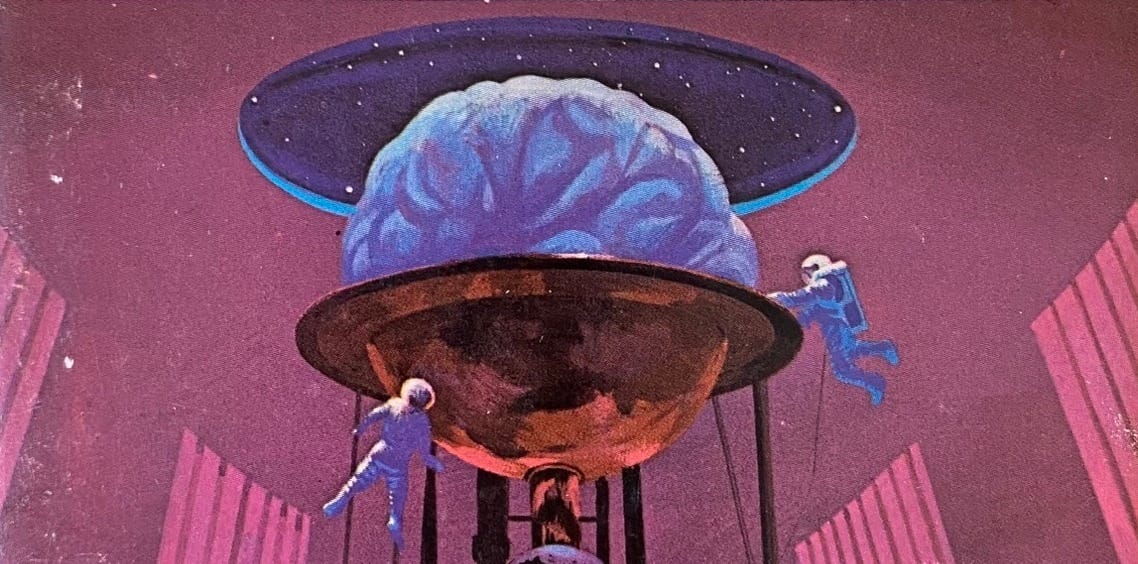
I've been collecting a lot of illustrations of sci-fi control panels this year, and fellow art enthusiast Ranaroth recently shared a great one: Jean-François Pénichoux’s 1981 cover to Robots: Historique de la robotique mobile du XXIeme au XXVeme siecle.
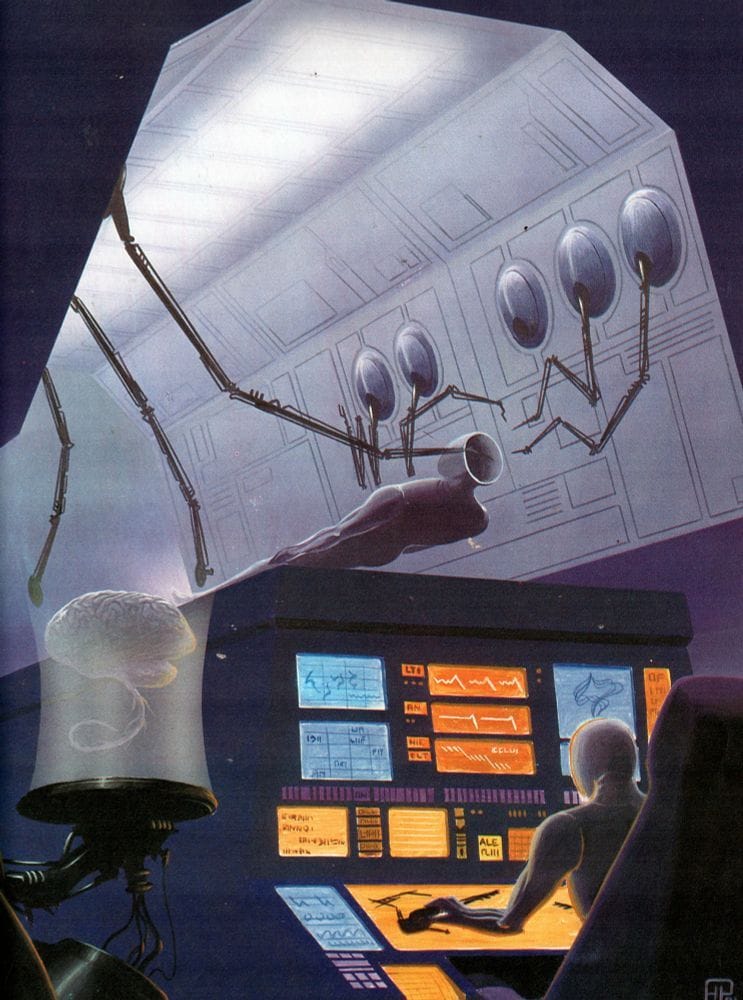
It's also a prime example of a classic element common to science fiction book covers everywhere: The brain.
Artists can get a lot of symbolic mileage out of brains, particularly within the science fiction genre. Check out this city literally built on human intellect, done by an uncredited artist for a 1988 cover to the Polish translation of Men Like Gods, by H. G. Wells.
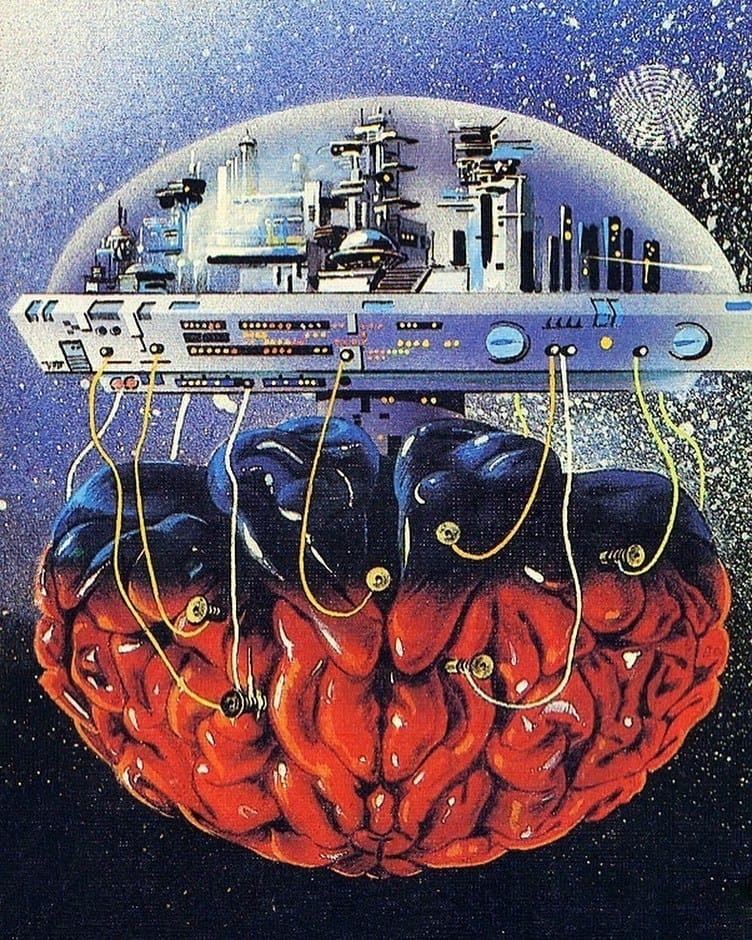
Destination: Void is a Frank Herbert novel about creating an artificial consciousness on the moon, so an uncredited 1970 cover artist depicted the giant brain that results.
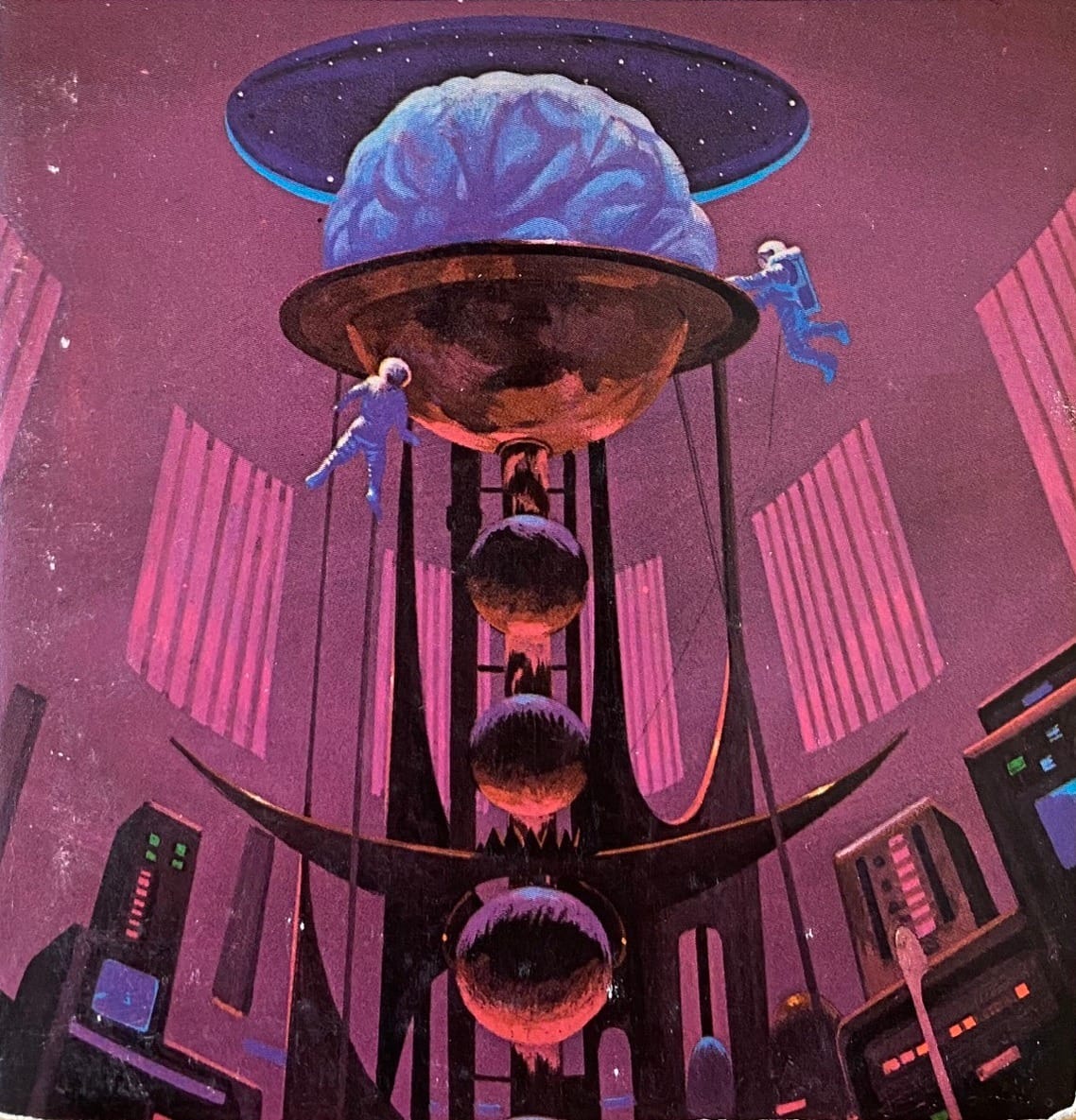
The brain-as-artificial-intelligence idea shows up in tech magazines, too. Paul Leatherwood's 1988 cover art for Micro Cornucopia #41 illustrates an article on the neural networks that are "modeling human reasoning."
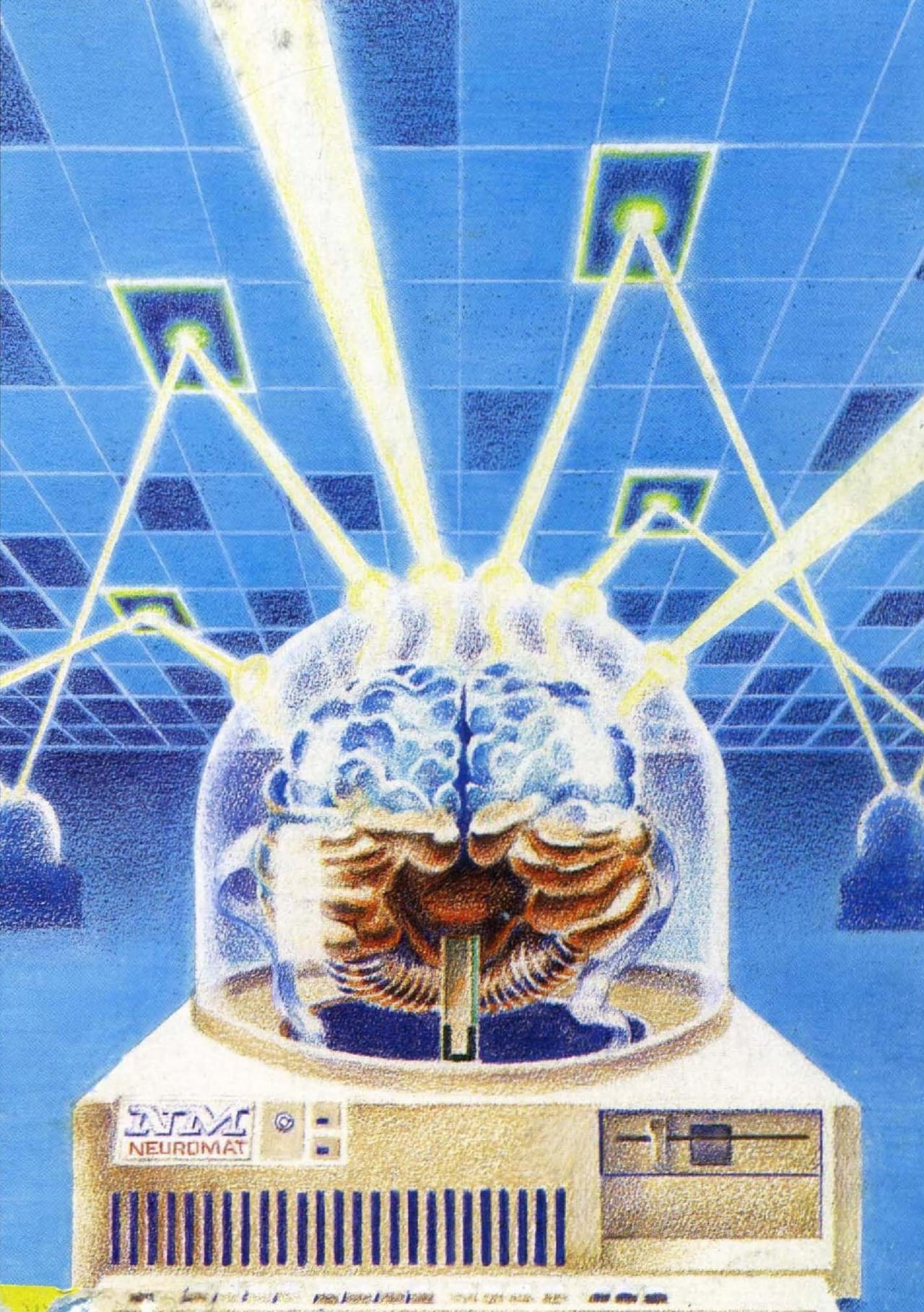
Brains overlap with the types of covers centered on space hospitals or sci-fi doctors.
This 1980 Boris Vallejo cover marks one example of the medical theme including a big pulsating brain in the background of Windsound, a novel written by his first wife, Doris Vallejo.
This scan comes from the art blogger Paperback Palette, who notes that the model for the woman was Doris herself, while the model for the man was prolific paperback model Steve Holland, who you might recognize from James Bama's iconic Doc Savage Bantam covers.
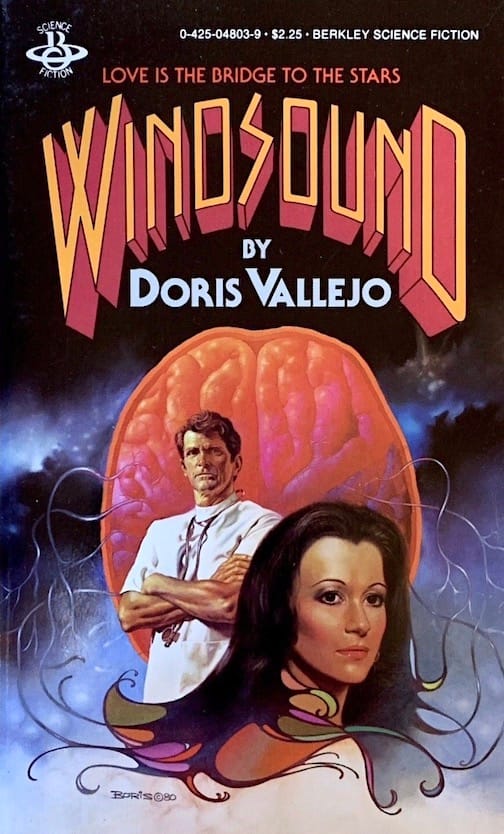
The brain is very relevant to the story itself, too, as the back cover explains:
'Once Nim Arra had been a man. Now he was only a brain. A pulsating tissue, kept alive in a laboratory, nurtured and cultivated so that he could voyage to distant galaxies on telepathic waves... Once Eno had loved a man. Now she refused to give him up, even as she shrank from the horror he had become...'
But let's not forget that brains – much like skulls – just look sick as hell, and that's just as good a reason as any other to include them on a science fiction cover. Here's Paul Alexander’s 1977 cover for a F&SF magazine anthology.
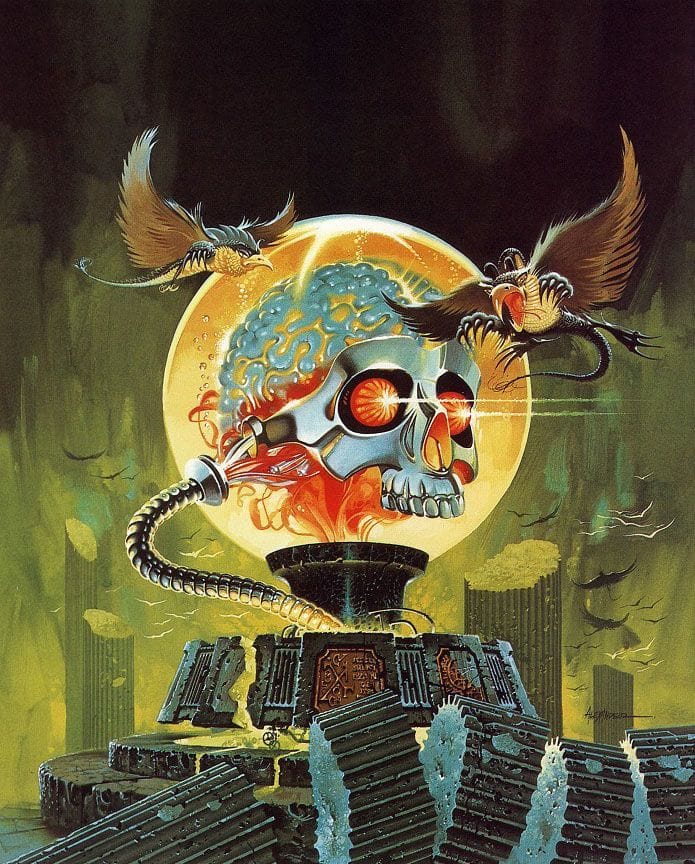
Sanjulian named this artwork "Brain Death," which is a good reminder for me that I need to do an entire post on science fiction's long relationship with the concept of puns.
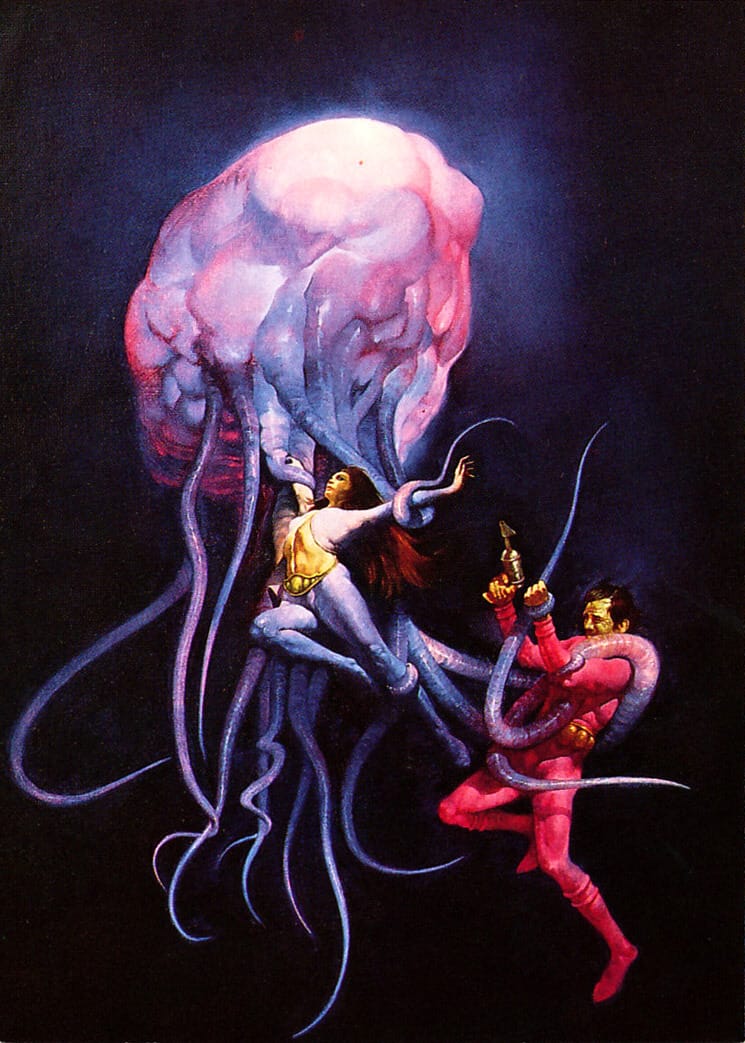
Demons battle over a rainbow brain on this 1977 Eerie cover by Frank Frazetta.
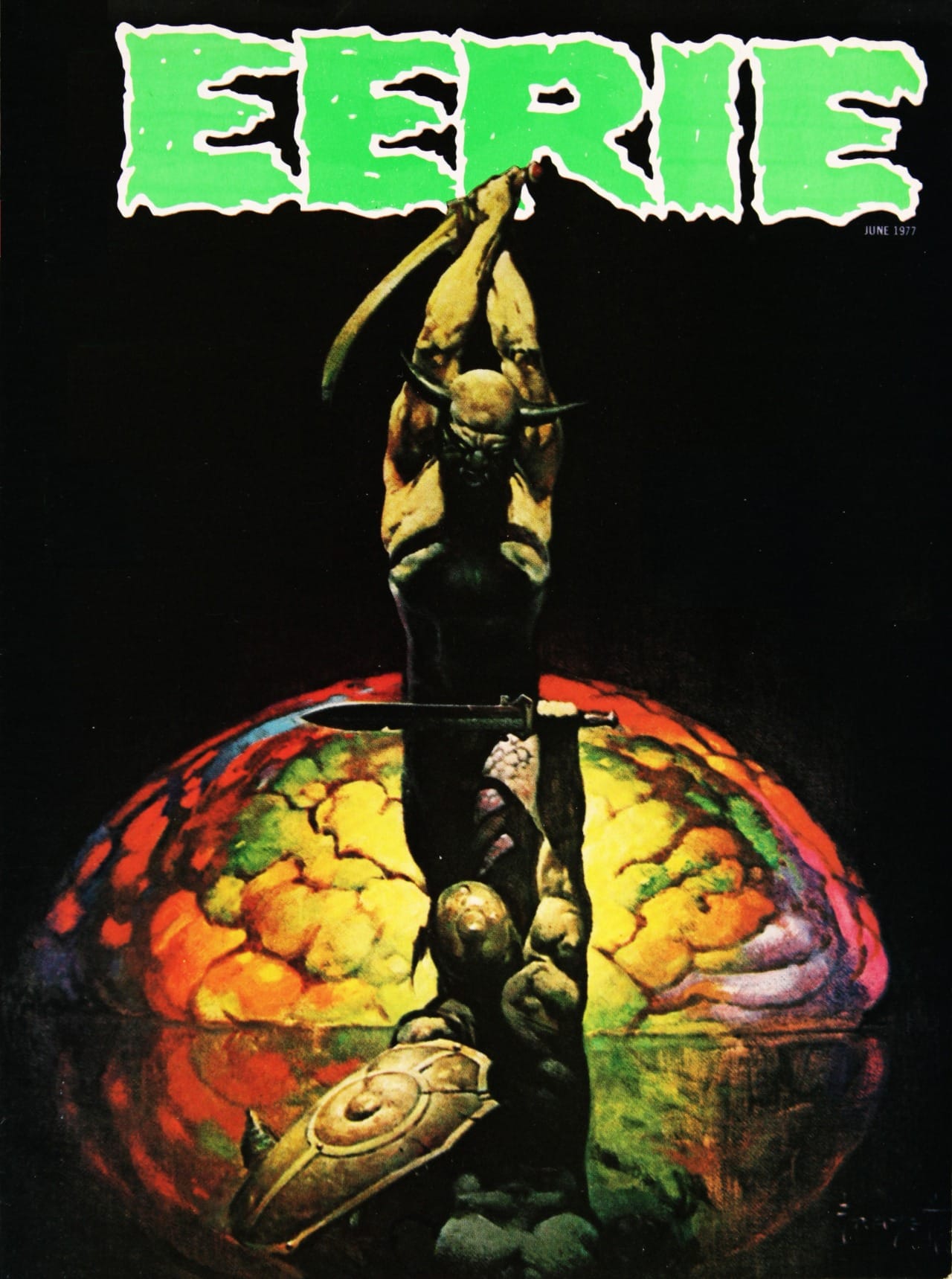
This article would be way too long if I tried to include all the brains that popped up in science fiction over the years. Peter Elson's 1977 cover to A. E. van Vogt's The Universe Maker is a straightforward example.
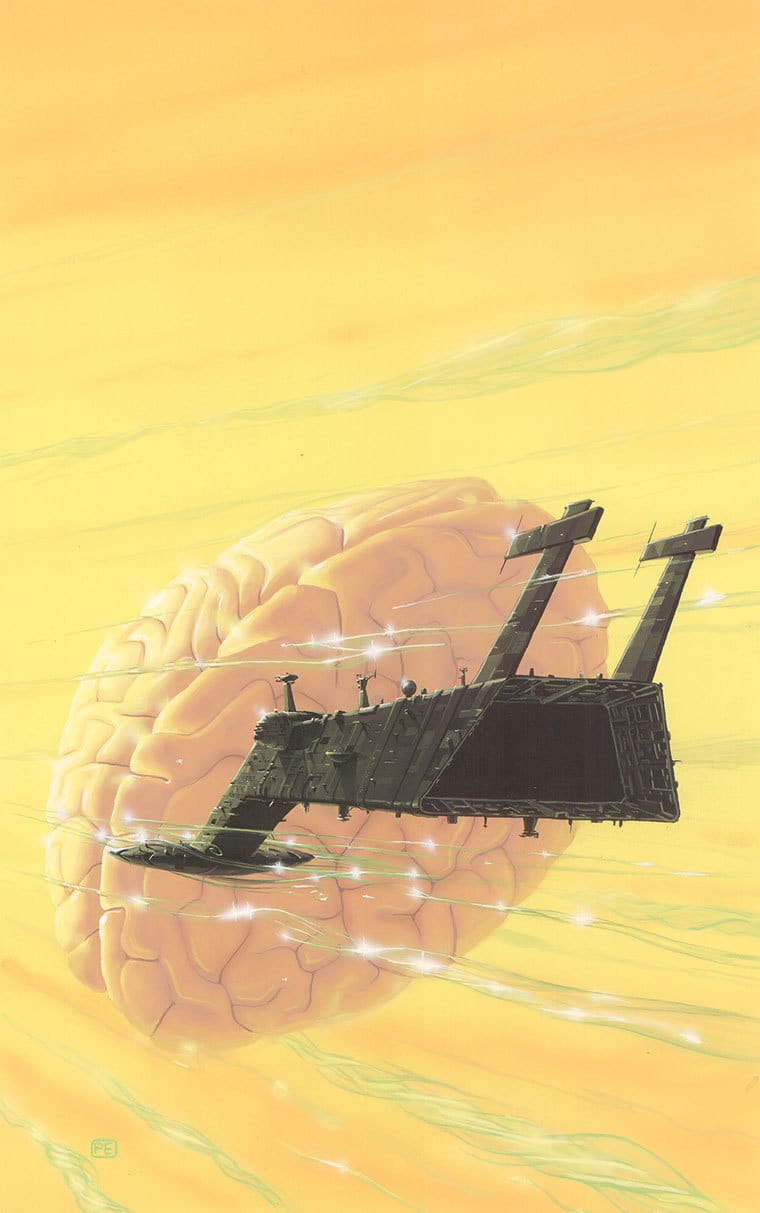
This Paul Lehr is another great one, even if that brain looks a bit more like a croissant.
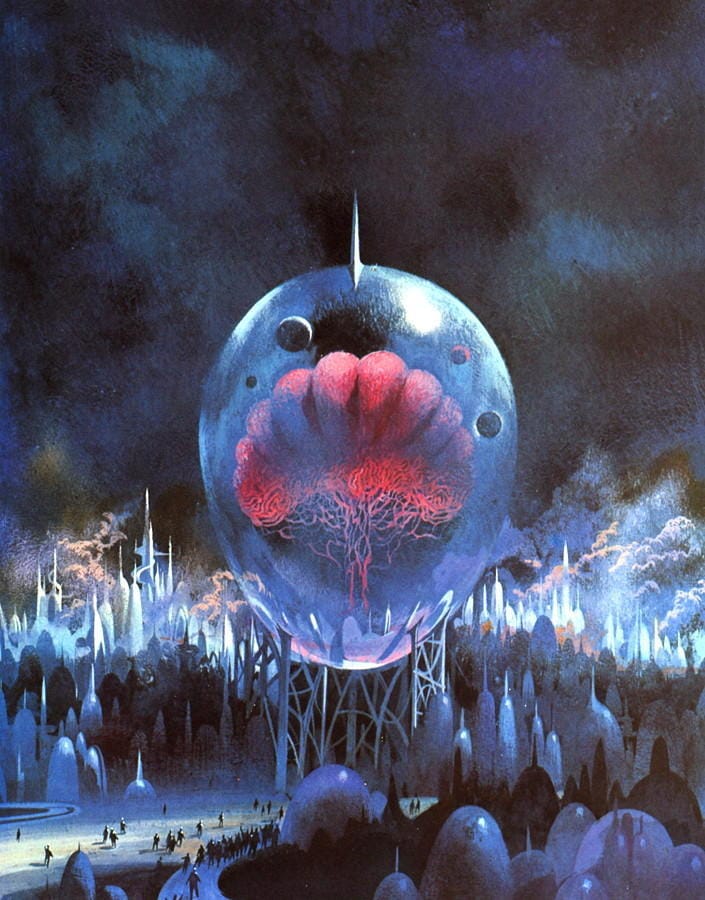
Surrealist artists love the symbolism that brains carry, so it's no wonder Gary Viskupic has one on his 1978 cover art for Alfred Bester’s The Demolished Man -- a novel that explores the societal impact of a world with telepaths in it.
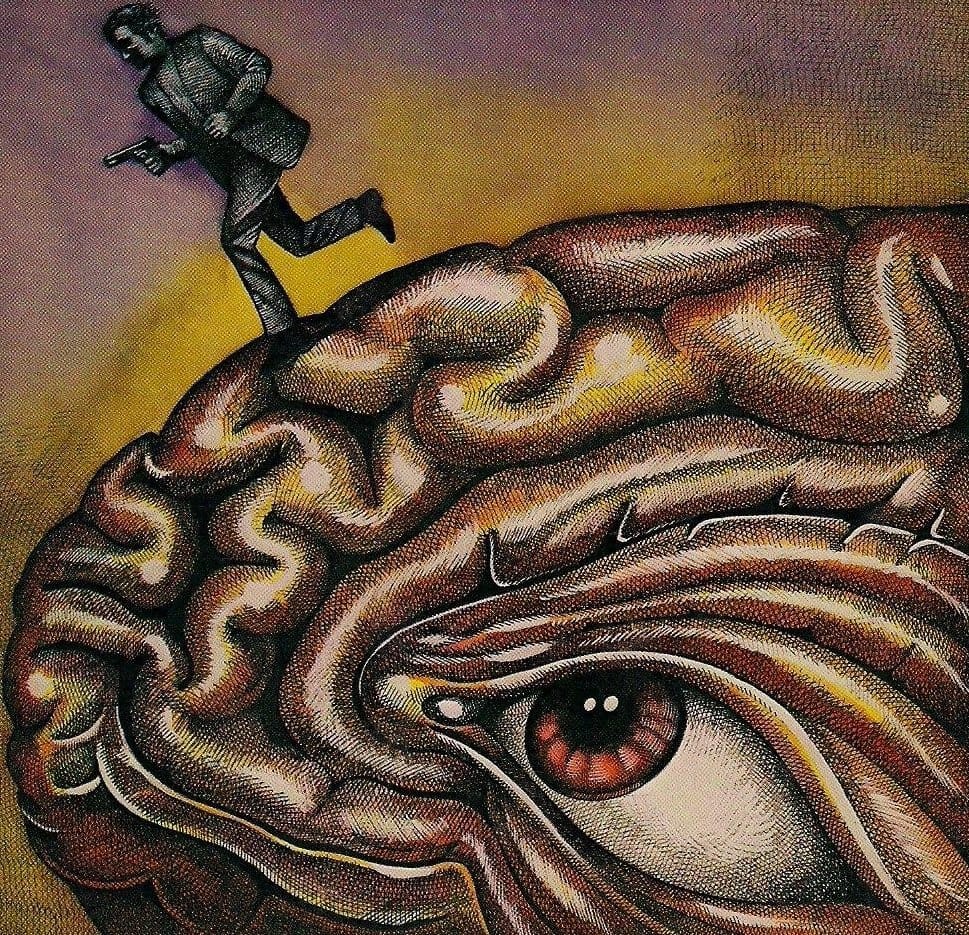
Here's D. A. Daily’s 1976 cover art for Energy Zero, by Gary Brandner.
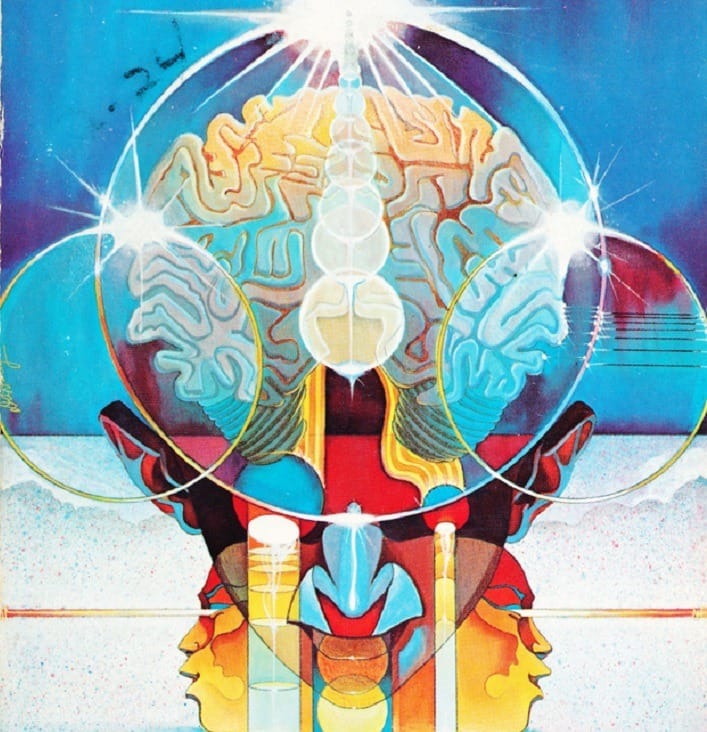
This 1956 Richard Powers cover to the Fredric Brown short story collection Star Shine doesn't actually display an exposed brain. But it certainly seems to be highlighting a brain with the abstract color choice, and he's deep in thought, so that's on-theme enough for me!
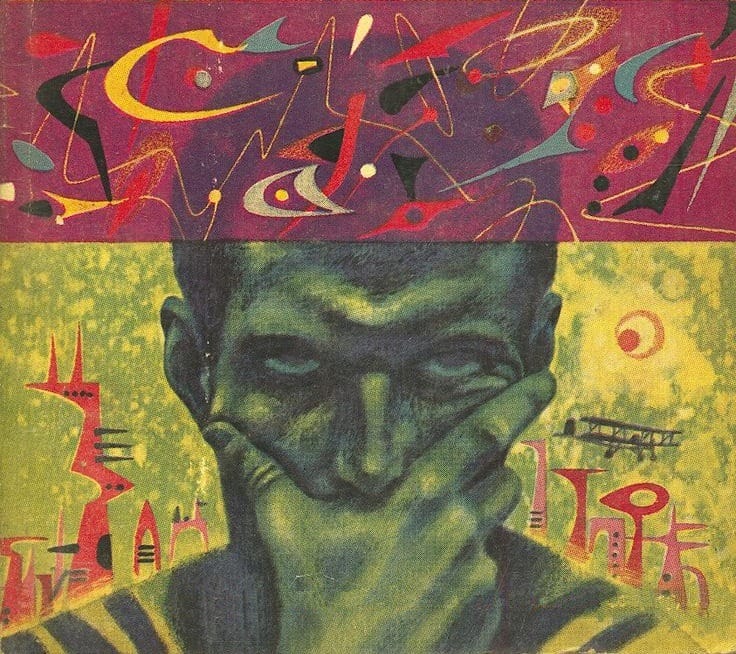
Ralph Brillhart's 1963 cover to J. Hunter Holly's The Running Man has a half-exposed brain, along with some creepy surrealism spilling out.
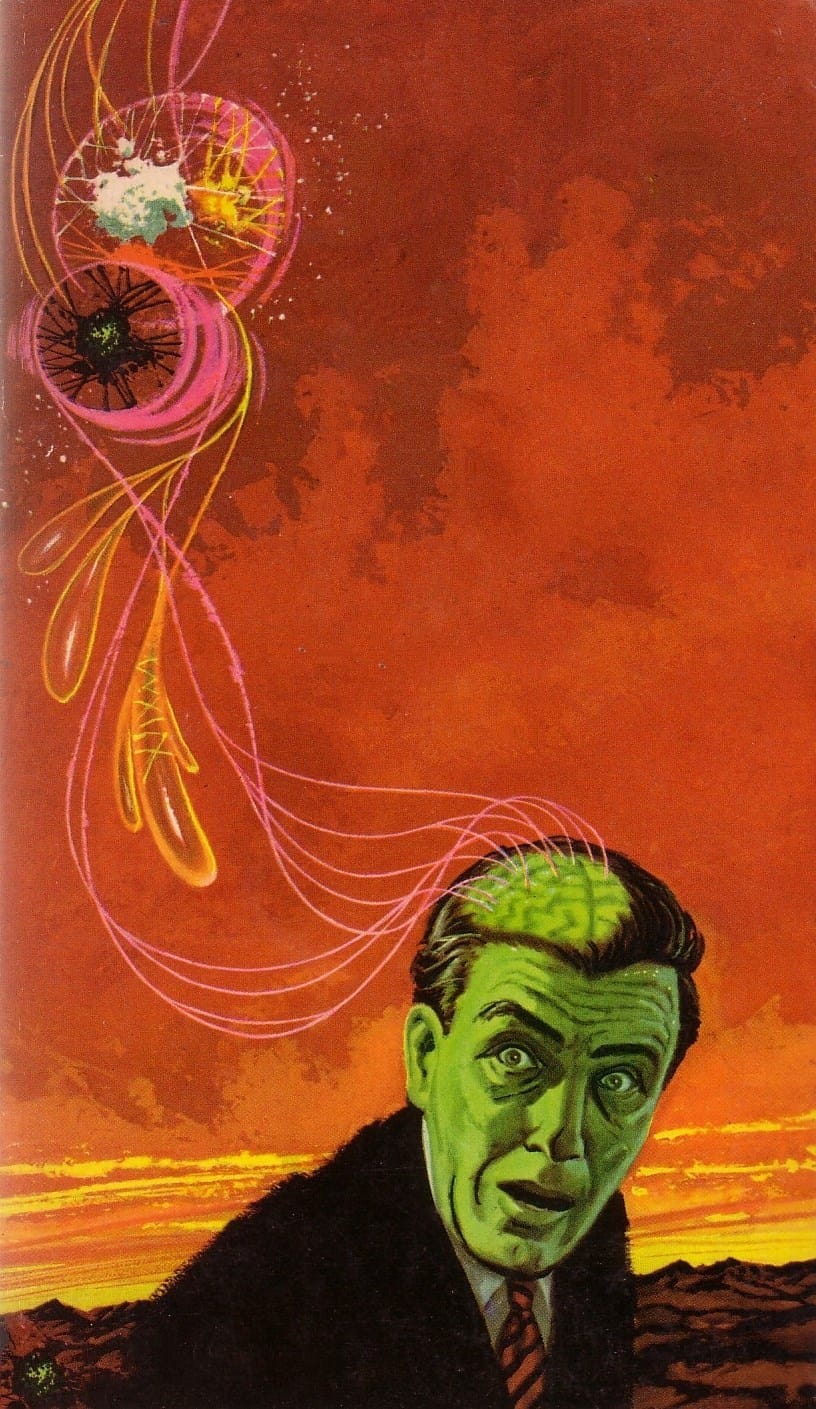
Even underground comics artist aren't immune to the need to depict a brain, as Basil Wolverton's 1974 back cover to Plop! #7 confirms.
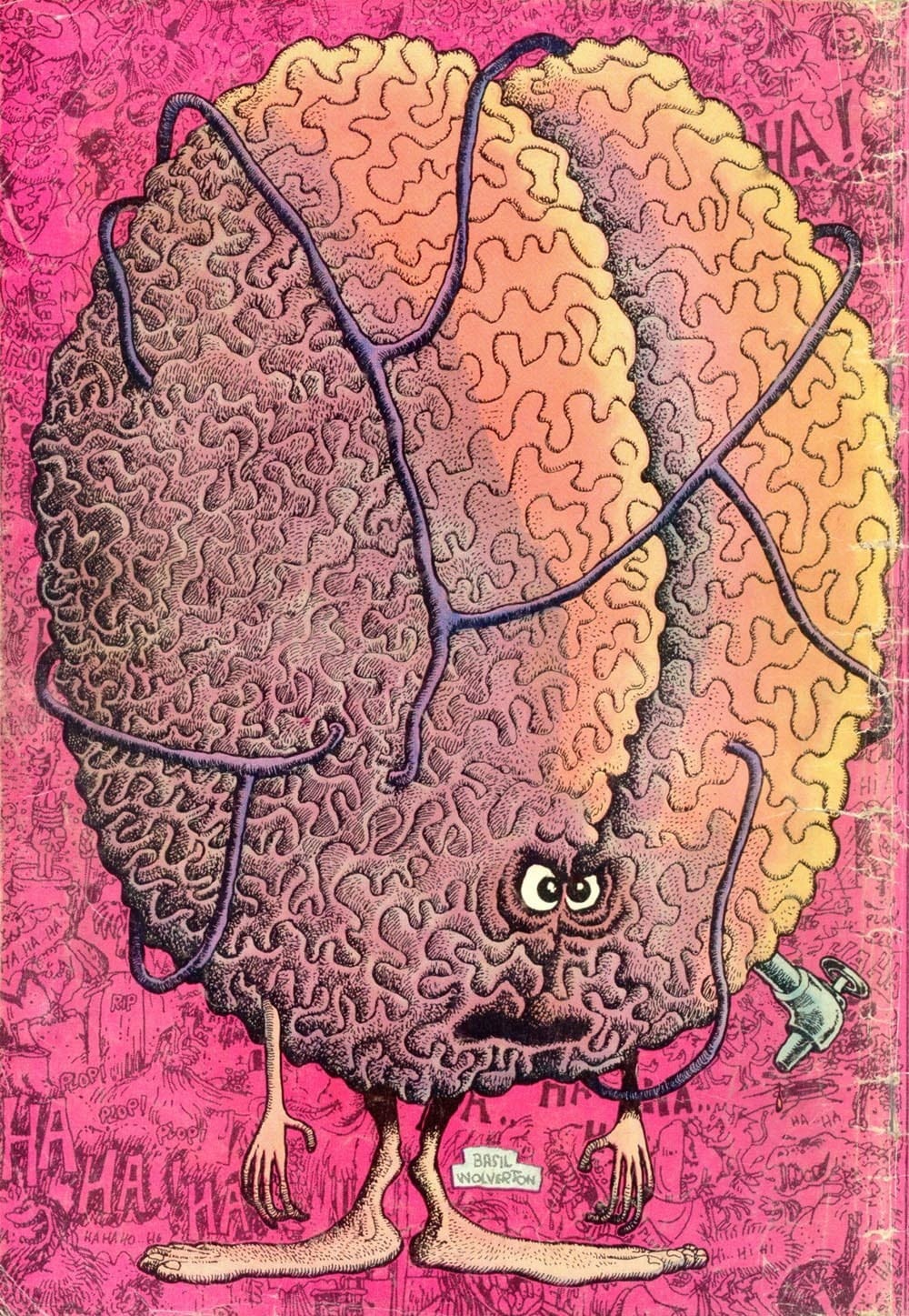
I have to include this 1979 Carlos Ochagavia cover for A Plague of Demons, by Keith Laumer! Ochagavia does such spellbinding work.
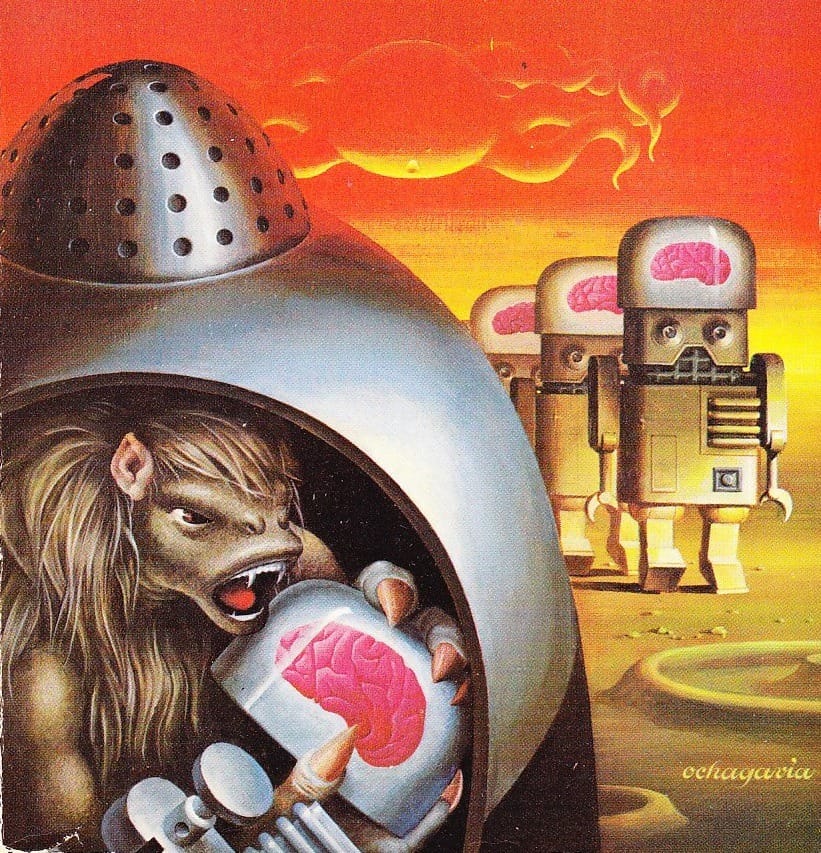
Here's a 1970s pharmaceutical ad from Argentinian graphic designer Eduardo C. Cánovas, depicting a human brain.
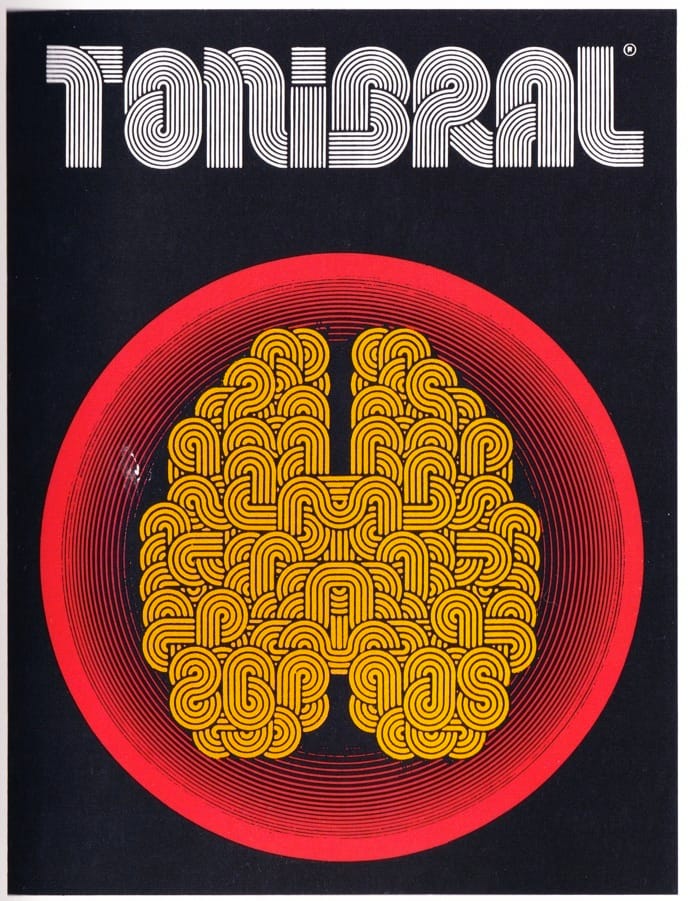
There's a lot going on with this 1973 Bruce Pennington cover for Out of Their Minds, by Clifford D. Simak. It not only centers around a spine-trunked brain-tree, but it even features a ridge of teeth that Don Quixote and Sancho Panza are riding alongside. How's that for a sentence that's no one has ever said before?
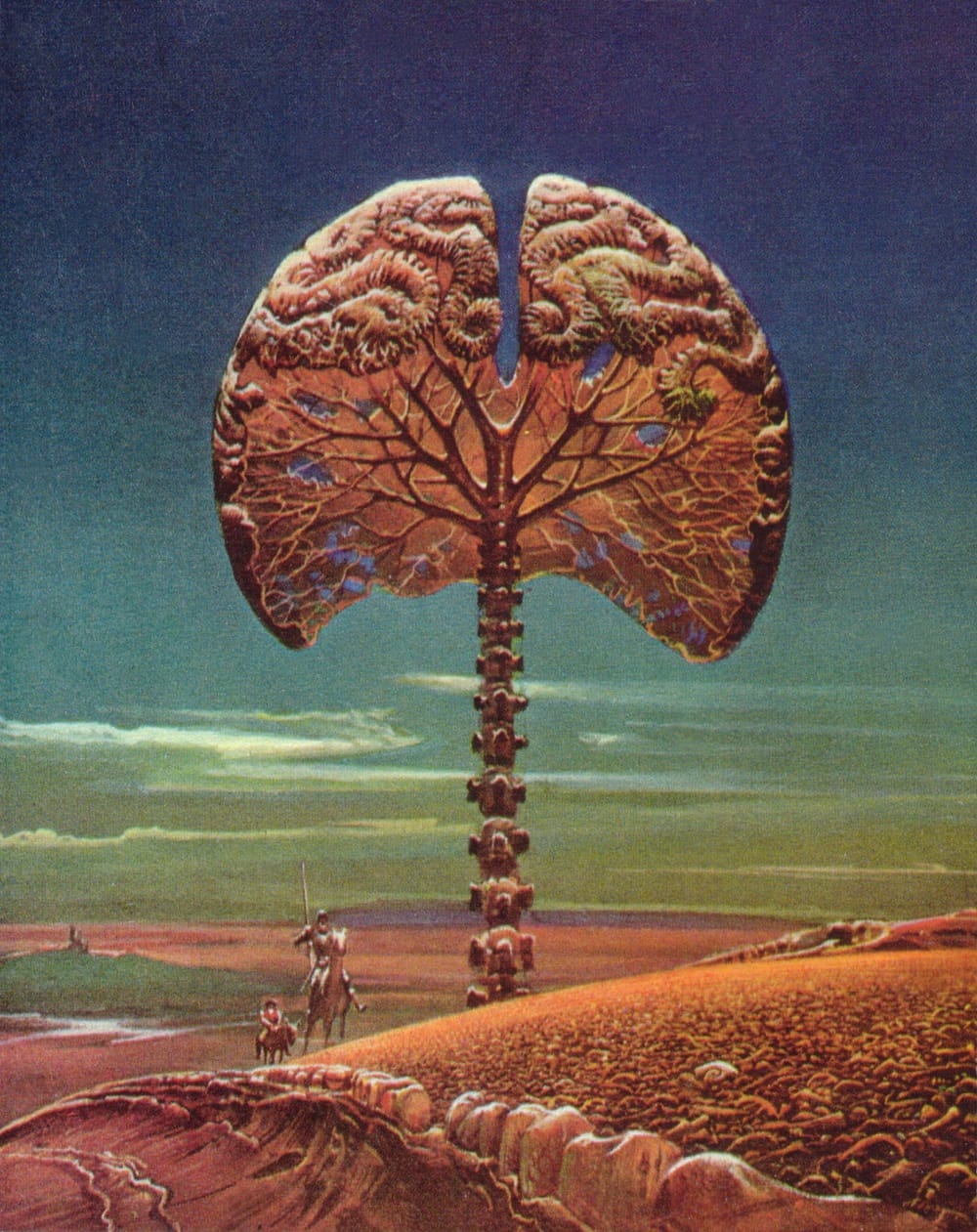
Let's end on a beautiful artwork by Jean-Francois Penichoux, the same artist I opened this collection with. It's another example of brain-based plant life.
I love the sense of weightlessness here, familar to anyone who's gone swimming.
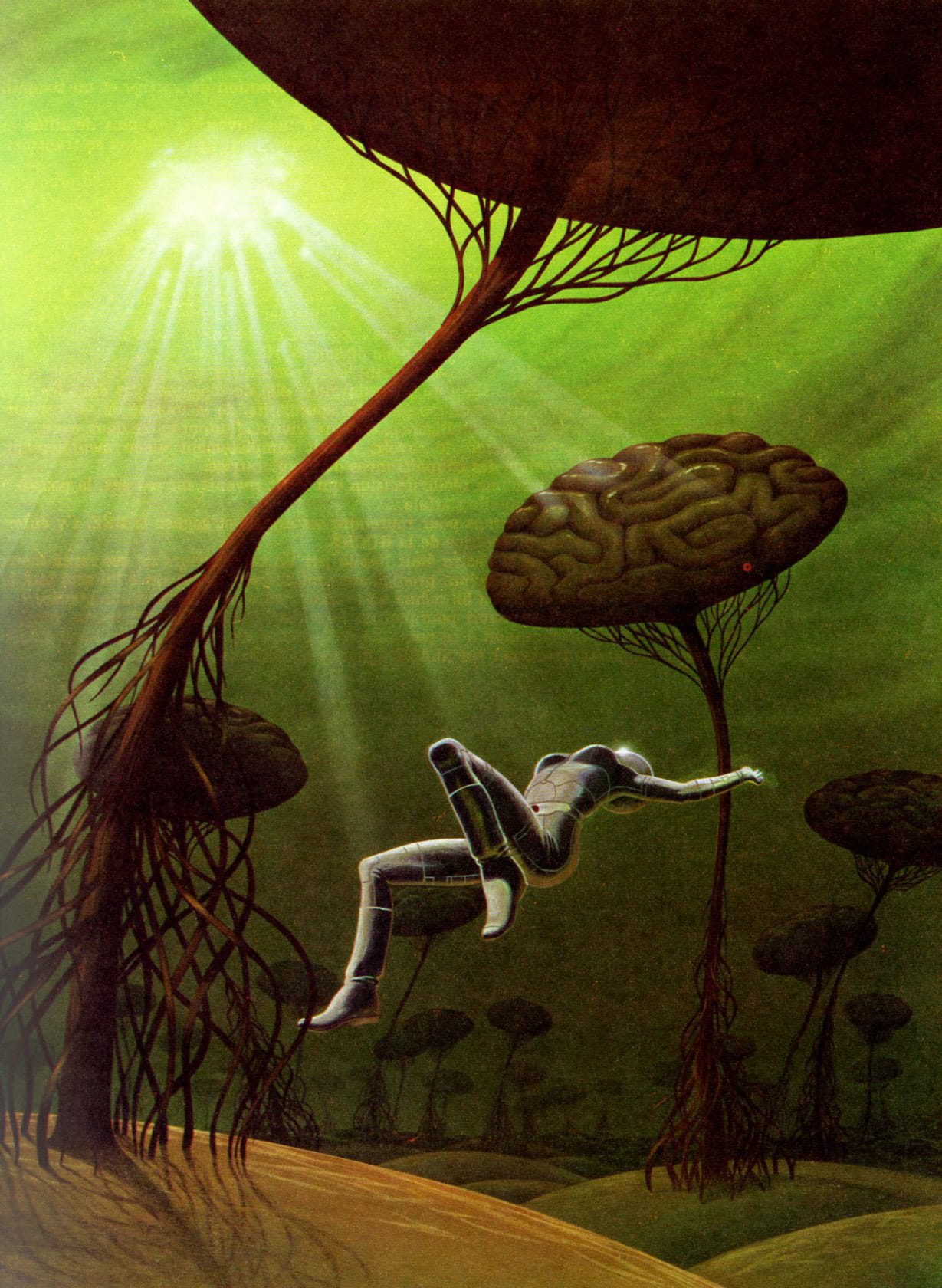
Cool Links
Revenge Of The Pink Panther (1978) Ads - Weirdland TV
This is just a contextless collection of newspaper ads for a 1978 Pink Panther movie that feature the Pink Panther dressed up as various famous figures who sought revenge. The Pink Panther Lizzy Borden is something else.
Also, Weirdland TV is a great follow if you're on Tumblr! Fun fact: They're behind the photoshop job on the Jack Gaughan Lord of the Rings covers I included in Worlds Beyond Time - the art was first posted on their blog and they kindly let me use it.
Orson Welles at The Magic Castle (1978)
The Museum of Classic Chicago Television's YouTube channel recently posted this rare 1978 TV special featuring Orson Welles performing magic tricks. Welles' monologue across the first two minutes of this thing is just begging to be included in a DJ mix. (via Michael Grasso)
How art social media accounts are being turned into books - The Art Newspaper
Hey I know a thing or two about that!
Music rec: Here, have my unlisted Studio Ghibli lo-fi playlist. This is some of the most comforting music on the internet. I just need this and a box of Pad Kee Mao takeout.
Next Time: Odds and Ends - November 2025